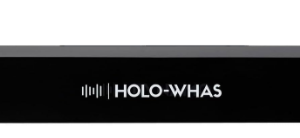The translation arena has seen significant growth, especially as more organizations continue to explore the global market due to technological evolution. Global markets are no longer reserved for bigwigs. Even medium and small businesses can explore extensive markets. This is since they can use the internet and the ever-growing shipping services to sell to consumers in the other corner of the world. While the global market offers excellent growth potential, it comes with challenges. Localization is among the most notable challenges. This is more so on translating and refining your content. You need to do more than just translate your content. This includes implementing practical localization quality assurance measures.
Linguistic quality evaluation and assurance are at the heart of successful translation endeavors. Here is a glance at LQA and LQE to help you scale your localization process flow as you pursue international markets.
Linguistic Quality Assurance (LQA)
LQA is the last stage of the translation process. The measure helps you to spot errors and correct them before publishing. Human linguists typically do LQA. They review the translation following a schema/set methodology. They determine if the translation contains objective errors such as grammar, spelling, inconsistent/inaccurate brand style, glossary, or terminologies. In the modern landscape, you can also turn to translation QA tools. The tools make it easier to manage the checks, especially with considerable automation. Nonetheless, with the potential of false positives, wholly QA process automation is hardly possible.
LQA is a proactive measure. You strive to catch and correct errors before publishing the final content. It makes your localization efforts more productive by providing the local audience with content they can easily consume. Nonetheless, LQA is not foolproof. Some errors might go unnoticed, especially with an overreliance on automation. Such inefficiencies are addressed through LQE.
Linguistic Quality Evaluation (LQE)
After translation and quality assurance, you still need to monitor the content. This helps to establish if it is fit for purpose, and that is where LQE comes in. LQE is typically done after a set period, for example, a few weeks following the translation. It provides feedback to linguists, helping them adjust their translations. This includes improvements even for your future projects. Without the feedback, they’ll continue making the same mistakes. This can affect content quality and fitness for purpose, dragging the localization process.
LQE provides feedback based on a sample of the translated content. The model, say 1000 words, makes it easier to rate the content and determine if it should be reviewed or published. Evaluating a sample is more manageable than the whole content. This is mainly in the modern, fast-paced world where content is being uploaded and distributed by the minute. Sample scoring entails elements such as:
- Setting an industry standard
- Defining the error types
- Categories the errors
- Setting severity levels
With LQE, you can spot problem areas that need more attention to improve the translations. This kicks the quality of the final product a level higher.
Localizing your content requires continuous assessment. This ensures you provide relatable and easy-to-consume materials to the local users. You want them to enjoy the same delivery as your primary market audience. LQA and LQE might seem like a lot of work and expensive. Nonetheless, they deliver more than the value of your investment as you pursue the new markets.



































